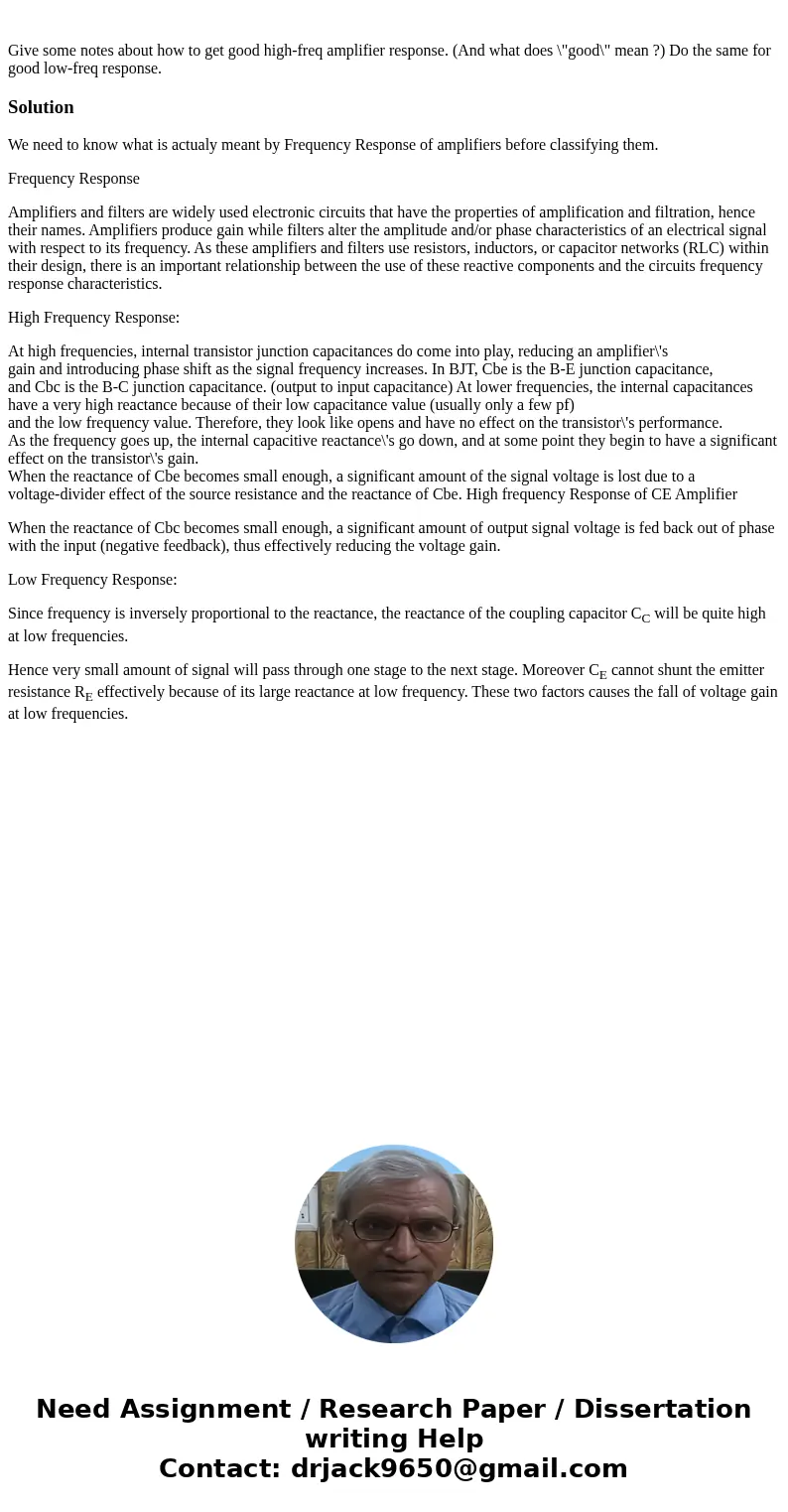Give some notes about how to get good highfreq amplifier res
Solution
We need to know what is actualy meant by Frequency Response of amplifiers before classifying them.
Frequency Response
Amplifiers and filters are widely used electronic circuits that have the properties of amplification and filtration, hence their names. Amplifiers produce gain while filters alter the amplitude and/or phase characteristics of an electrical signal with respect to its frequency. As these amplifiers and filters use resistors, inductors, or capacitor networks (RLC) within their design, there is an important relationship between the use of these reactive components and the circuits frequency response characteristics.
High Frequency Response:
At high frequencies, internal transistor junction capacitances do come into play, reducing an amplifier\'s
gain and introducing phase shift as the signal frequency increases. In BJT, Cbe is the B-E junction capacitance,
and Cbc is the B-C junction capacitance. (output to input capacitance) At lower frequencies, the internal capacitances have a very high reactance because of their low capacitance value (usually only a few pf)
and the low frequency value. Therefore, they look like opens and have no effect on the transistor\'s performance.
As the frequency goes up, the internal capacitive reactance\'s go down, and at some point they begin to have a significant effect on the transistor\'s gain.
When the reactance of Cbe becomes small enough, a significant amount of the signal voltage is lost due to a
voltage-divider effect of the source resistance and the reactance of Cbe. High frequency Response of CE Amplifier
When the reactance of Cbc becomes small enough, a significant amount of output signal voltage is fed back out of phase with the input (negative feedback), thus effectively reducing the voltage gain.
Low Frequency Response:
Since frequency is inversely proportional to the reactance, the reactance of the coupling capacitor CC will be quite high at low frequencies.
Hence very small amount of signal will pass through one stage to the next stage. Moreover CE cannot shunt the emitter resistance RE effectively because of its large reactance at low frequency. These two factors causes the fall of voltage gain at low frequencies.

 Homework Sourse
Homework Sourse